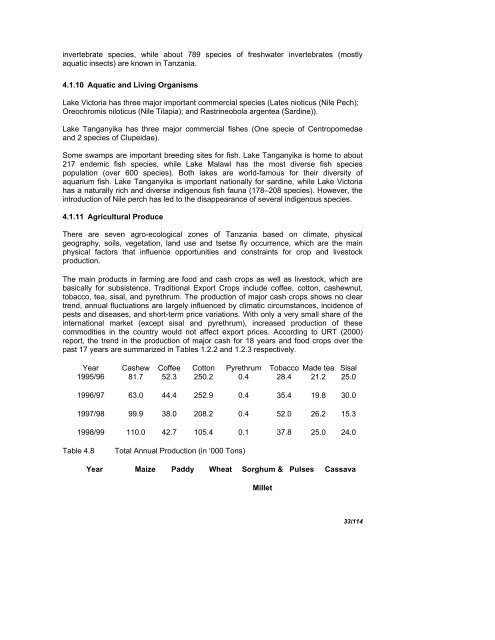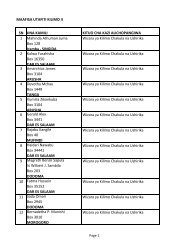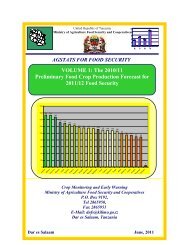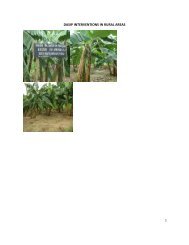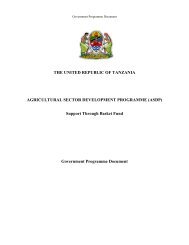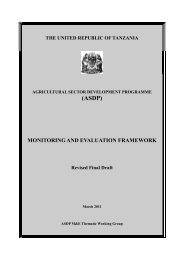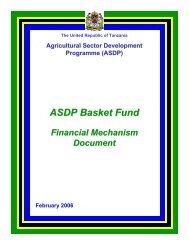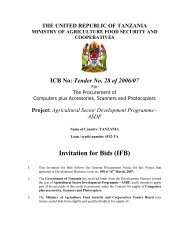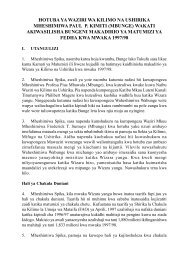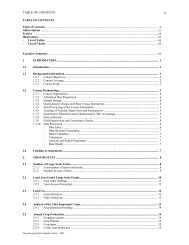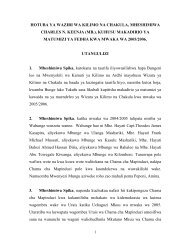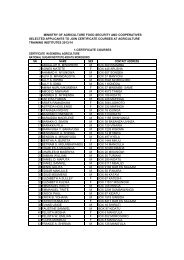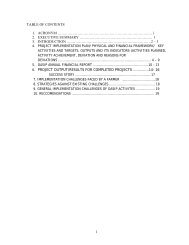ASDP: Environmental And Social Management Framework
ASDP: Environmental And Social Management Framework
ASDP: Environmental And Social Management Framework
- No tags were found...
Create successful ePaper yourself
Turn your PDF publications into a flip-book with our unique Google optimized e-Paper software.
invertebrate species, while about 789 species of freshwater invertebrates (mostlyaquatic insects) are known in Tanzania.4.1.10 Aquatic and Living OrganismsLake Victoria has three major important commercial species (Lates nioticus (Nile Pech);Oreochromis niloticus (Nile Tilapia); and Rastrineobola argentea (Sardine)).Lake Tanganyika has three major commercial fishes (One specie of Centropomedaeand 2 species of Clupeidae).Some swamps are important breeding sites for fish. Lake Tanganyika is home to about217 endemic fish species, while Lake Malawi has the most diverse fish speciespopulation (over 600 species). Both lakes are world-famous for their diversity ofaquarium fish. Lake Tanganyika is important nationally for sardine, while Lake Victoriahas a naturally rich and diverse indigenous fish fauna (178–208 species). However, theintroduction of Nile perch has led to the disappearance of several indigenous species.4.1.11 Agricultural ProduceThere are seven agro-ecological zones of Tanzania based on climate, physicalgeography, soils, vegetation, land use and tsetse fly occurrence, which are the mainphysical factors that influence opportunities and constraints for crop and livestockproduction.The main products in farming are food and cash crops as well as livestock, which arebasically for subsistence. Traditional Export Crops include coffee, cotton, cashewnut,tobacco, tea, sisal, and pyrethrum. The production of major cash crops shows no cleartrend, annual fluctuations are largely influenced by climatic circumstances, incidence ofpests and diseases, and short-term price variations. With only a very small share of theinternational market (except sisal and pyrethrum), increased production of thesecommodities in the country would not affect export prices. According to URT (2000)report, the trend in the production of major cash for 18 years and food crops over thepast 17 years are summarized in Tables 1.2.2 and 1.2.3 respectively.Year Cashew Coffee Cotton Pyrethrum Tobacco Made tea Sisal1995/96 81.7 52.3 250.2 0.4 28.4 21.2 25.01996/9763.044.4252.90.435.419.830.01997/9899.938.0208.20.452.026.215.31998/99110.042.7105.40.137.825.024.0Table 4.8Total Annual Production (in ‘000 Tons)Year Maize Paddy Wheat Sorghum &MilletPulsesCassava33/114


